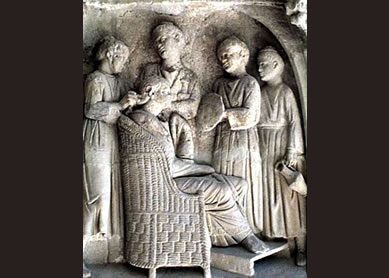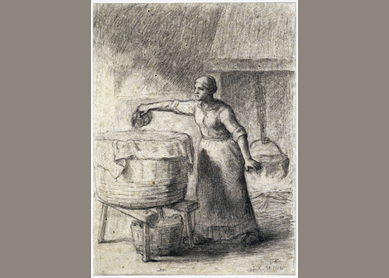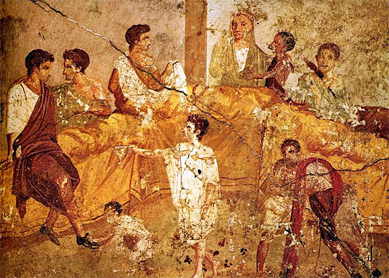Slavery in the Roman Empire was a fact of life. Most people could not imagine a society without slaves. Some people spoke out against the mistreatment of slaves, and there were slave revolts, but no abolitionist movement existed.
The fate of a slave depended largely on the temperament of his or her master. Masters could punish slaves brutally for real or perceived infractions. Sexual abuse of slaves was also common. Slave work included hard labor as well as skilled service like tutoring, bookkeeping, and estate managing. Masters often freed slaves—and for numerous reasons, including as a reward for obedience and loyalty. Written contracts, however, commonly enforced continued work by freed slaves for their former masters. A wide range of circumstances dictated whether a slave would be educated, illiterate, poor, wealthy, abused, or comfortable.
New Testament writers lived in the Roman Empire and likewise adopted widespread attitudes about slaves. Some New Testament passages rely on negative stereotypes, such as slaves being lazy (Matt 25:26). Other passages use slavery as a metaphor for faithfulness. Paul calls himself a “slave of Jesus Christ” as a sign of devotion (Rom 1:1). Jesus compares the impossible task of a slave serving two masters to followers who must choose between wealth and God (Matt 6:24, Luke 16:13). Several passages address slaves directly, which is evidence that they were attracted to the early Jesus movement (1Cor 7:21, 1Tim 6:1, 1Pet 2:18). Christian slaves navigated the complex world of enslavement with their new faith.
The most famous slave in the New Testament epistles is Onesimus, the slave of Philemon. In a short letter, Paul implores Philemon to receive Onesimus as “a beloved brother” (Phlm 16). Whether Paul intended freedom for Onesimus is a matter of debate because Paul never explicitly requests his freedom. Other New Testament letters forcefully instruct slaves to obey their masters (Eph 6:5-8, Col 3:22-24, 1Tim 6:1-2, 1Pet 2:18, Titus 2:9-10). Some passages tell masters to treat slaves better—an indication that some Christians treated their slaves poorly (Eph 6:9, Col 4:1).
Slaves appear occasionally as minor characters in the Gospels and Acts. Jesus heals an ill slave of a Roman centurion (Luke 7:1-10). At Jesus’ arrest, one of his followers cuts off the ear of the slave of the high priest. Though Jesus censures this act of violence in all four Gospels, only one records Jesus healing the slave (Luke 22:51). The incident underscores how easily slaves could become victims of free people’s anger. In Acts, the slave Rhoda runs to tell the others that Peter is freed from prison. They do not believe her, perhaps owing to the stereotype that slaves were untrustworthy (Acts 12:12-17).
Jesus refers to slaves often in his parables. Slaves in the parable of the prodigal son perform routine work in the background of the estate (Luke 15:22, Luke 15:26). Other parables depict cruel treatment of slaves, such as the parable of the wicked tenants. Slaves are disposable: they suffer beatings and death at the hands of tenants (Matt 21:33-44, Mark 12:1-12, Luke 20:9-18). Some New Testament writers accepted violence against slaves as normal as seen in these parables (see Matt 18:23-35, Luke 19:11-27).
The New Testament does contain several passages that demonstrate resistance to slavery. Slave traders are included in a list of those who are lawless, probably because many acquired slaves illegally (1Tim 1:10). Another passage condemns the immoral trade of luxury goods in the Roman Empire, concluding with “bodies,” a common euphemism for slaves (Rev 18:13). These indictments of the slave trade are unusual but welcome voices in the New Testament.



